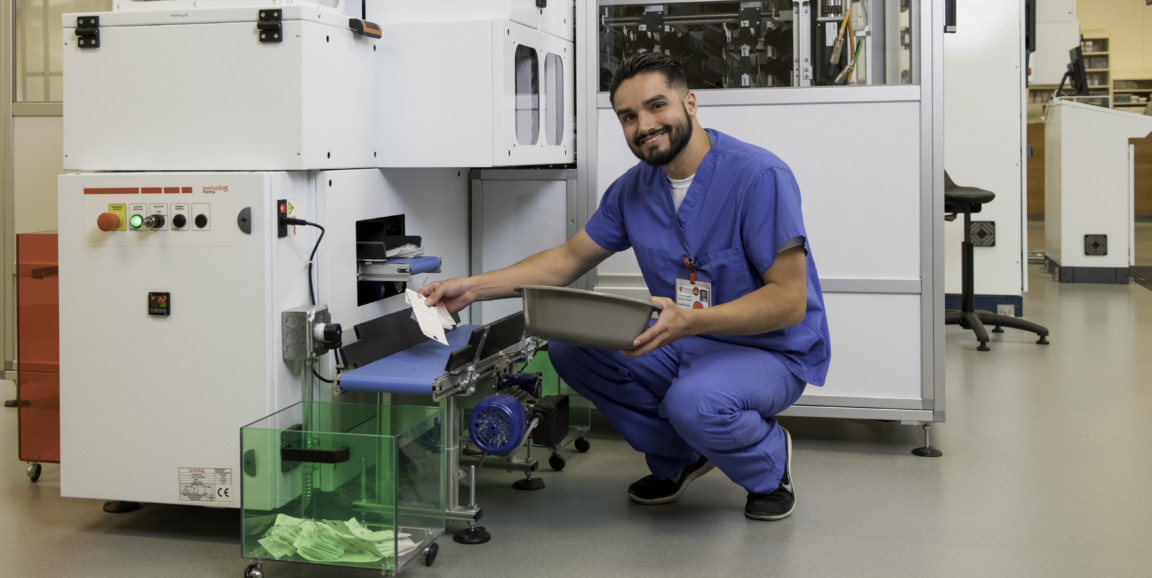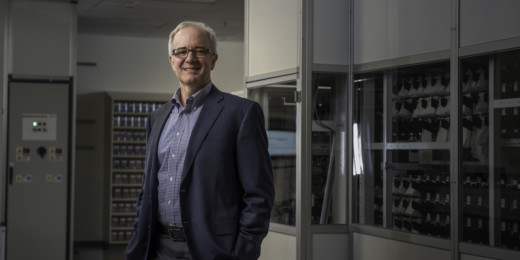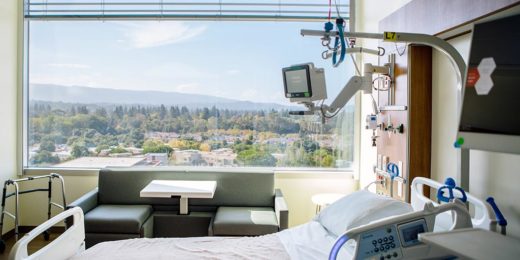At the new Stanford Hospital, patients can adjust the lighting or temperature in their room, order a meal, or even request a massage, using a tablet at their bedside. Through the MyHealth app, designated family members can access details of their hospitalized loved one's care from across the country.
Heart-rate monitors, infusion pumps and automated prescription-filling machines are connected to patients' electronic health records -- updating them automatically, so care teams don't have to.
As Julie Greicius details in her Stanford Magazine story, "Tomorrow's hospital, today," there are about 180 applications woven into the hospital operations, all in support of patients, caregivers and care providers:
In many cases, the futuristic technology of the new hospital also makes way for more meaningful human interactions, offloading tasks that can be automated so caregivers have more time and patients are interrupted only when necessary.
'Imagine maybe concentric rings, where the first ring is technology that the patient experiences directly,' said Gary Fritz, vice president and chief of applications. 'Then one ring out is technology that's used by clinicians to take care of the patient. And in the next ring further out, there's technology that supports the hospital, which supports the people who are taking care of the patients.'
Among those advancements:
- Every biomedical device and most of the laptops and other equipment in the building have sensors connected to a real-time location system, allowing for more accurate inventory.
- Instead of alarms and alerts going off in patients' rooms, nurses will get immediate notifications on phones they carry with them.
- The pharmacy uses three robotic machines that select medications and prepare them into single doses to be delivered to medication-dispensing stations throughout the hospital. Medication orders, along with any returned medication, are entered directly in the patient's electronic health record.
- Autonomous courier robots will transport linen and garbage between the new hospital and the central loading dock at 300 Pasteur Drive, so people don't have to.
Much of the technology in the hospital can be classified under the "Internet of things," commonly referred to simply as IoT, a system in which objects are embedded with computing devices that can connect and send data via the Internet.
"This is an IoT hospital of the first order," Fritz says.
While hospital planners spend lots of time thinking about the technology, they also focused on developing an environment of healing. That should be especially true on the third floor, where families can find information about medical conditions, meditate or spend a moment in nature.
"We did a lot of work to identify, what were the needs that the patients had, before we designed what the building would accomplish," Stanford Health Care CEO David Entwistle says in a video that accompanies the magazine story. "When you look at this building and its design, it really is designed around that care experience."
Photo of pharmacy technician Joel Rivera, with one of the pharmacy robots, by Kevin Meynell Photography






